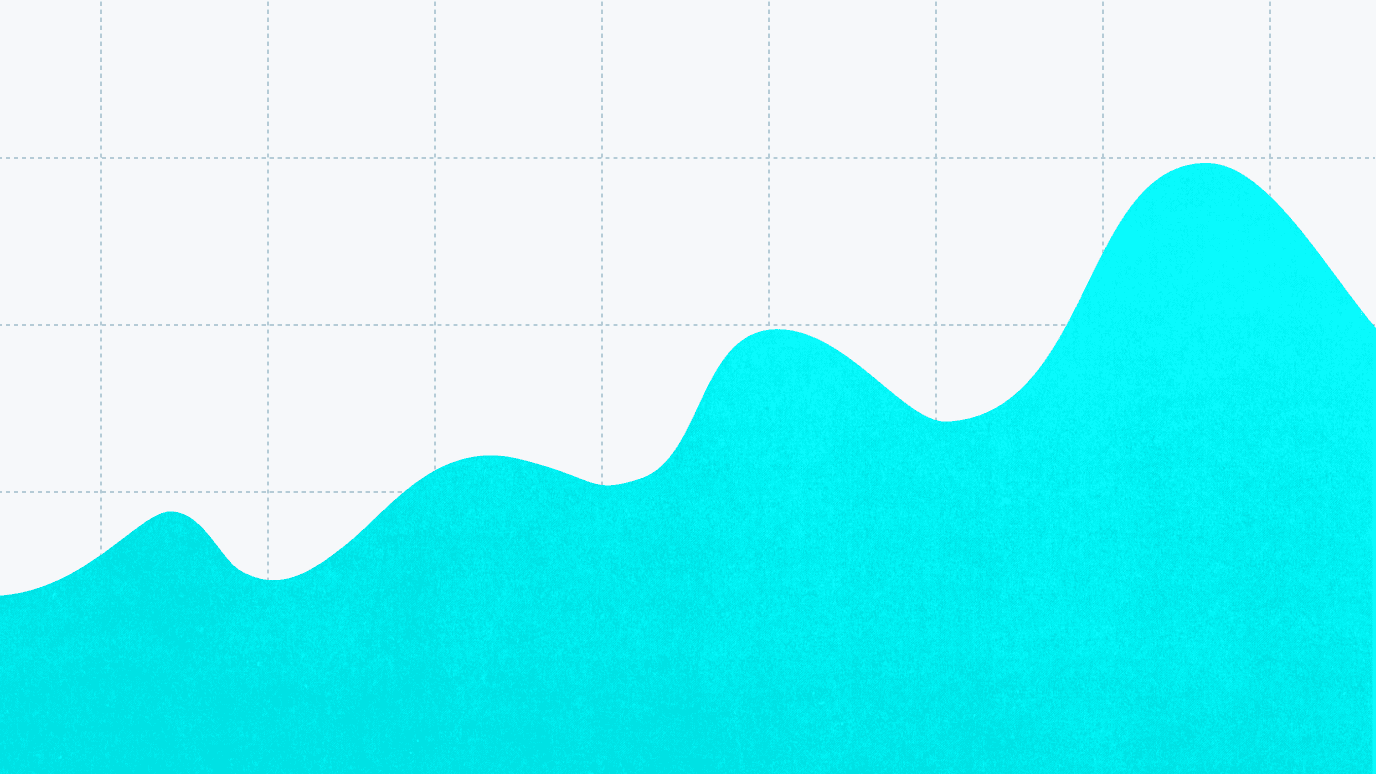Mar 20, 2024
A Guide to Stock Market Volatility (and How to Tune Out the Noise)

In this article:
- What is stock market volatility?
- Why does stock market volatility matter?
- Types of stock market volatility
- How is stock market volatility measured?
- What causes stock market volatility?
- How much stock market volatility is normal?
- How investors can manage stock market volatility
- Navigating stock market volatility
Stock market volatility refers to how much and how quickly the value of the market tends to change over time. The extent and frequency of these fluctuations help investors gauge the risk of investing.
All investing comes with risk, and volatility is an inherent part of how the stock market works. But some stocks tend to be more volatile, and therefore more risky, than others. As an investor, it can be nerve wracking to see your portfolio’s value rise and fall when the stock market is particularly volatile. But understanding the nuances of volatility can help you develop strategies to mitigate risk, capitalize on market movements, and make the right choices for your investment portfolio.
What is stock market volatility?
Volatility in the stock market manifests as price fluctuations over time, affecting both individual stocks and the market as a whole. Shaped by varying factors such as investor sentiment, economic shifts, and corporate performance, stock market volatility influences the risk and potential return of investments. A certain amount of volatility is inherent to the dynamic nature of the market overall, as well as to individual stocks.
Why does stock market volatility matter?
Volatility helps investors get a sense of how likely their stocks are to increase or decrease in value, especially in the short term. Investors can look at the volatility of a specific stock to understand how risky that investment may be. A stock with high volatility changes price frequently, and often dramatically. That means more risk, but also the potential for higher returns. Low-volatility stocks, in contrast, see more stable prices over time, with modest ups and downs. They’re generally less risky, but also less likely to skyrocket in value.
You can think of stock market volatility like the waves on an ocean. When you’re rowing your boat on the open sea, some journeys are smooth sailing: small waves, pleasant breezes, clear skies, and straight-ahead navigation. Journeys to more exotic, hidden destinations, however, might require navigating waters that are a bit choppier, with bigger waves, unexpected gusts, and storms rolling in. If you have a more ambitious destination in mind, you might decide the more turbulent waters are worth the risk.
Types of stock market volatility
Stock market volatility can be categorized into two main types:
Implied volatility: Implied volatility looks ahead, projecting future volatility based on current market trends and investor sentiment. Measuring implied volatility is one way investors can estimate how volatile a stock or index might become and try to predict potential future performance.
Historical volatility: Historical volatility looks back, analyzing past price movements to assess how volatile a stock or market has been over time. This measure can tell investors how much a security’s price has deviated from its average value over a specific period of time.
Investors can examine both these types of volatility to understand the varying degrees of risk and price swings associated with individual securities and the market as a whole.
How is stock market volatility measured?
There are a few key metrics used to determine volatility, each offering insights into different aspects of both market and individual stock behavior. Measures like the CBOE Volatility Index (VIX) provide a snapshot of overall market volatility, while standard deviation and stock price beta are commonly used to assess the volatility of individual stocks.
Chicago Board Options Exchange (CBOE) Volatility Index
The CBOE Volatility Index, or VIX, is one of the primary sources investors use to assess stock market volatility broadly. Often referred to as the “fear gauge” of the stock market, the VIX calculates expected market fluctuations by aggregating the weighted prices of S&P 500 index options up to 30 days into the future. With this real-time volatility estimate, the VIX helps investors judge the sentiment and potential market risk in the current environment.
Standard deviation
Standard deviation is a method used to calculate how widely data points differ from their average value, and it’s commonly used to assess the volatility of an individual stock. Knowing the standard deviation of an investment’s price over a specific interval of time can help you assess its risk level. The higher the standard deviation, the more the price deviates from the average and, therefore, the higher the stock’s volatility. By comparing the standard deviations of different stocks, investors can make informed trading decisions about the risk-reward profile of their investments.
Stock price beta
Stock price beta is a key indicator of a stock’s risk. While a stock’s price is determined by the market’s buying and selling dynamics and influenced by factors like company performance, investor sentiment, and wider economic trends, its beta measures its volatility relative to the overall market. A higher beta indicates higher risk and potentially higher returns, while a lower beta suggests lower risk and lower, more reliable returns. For example, a beta of 1 means the stock’s price tends to move with the market, while a beta greater than 1 suggests that the stock might have a high volatility, or experience larger price swings. A beta of less than 1 implies low volatility, often found in more stable, dividend-paying investments like blue-chip stocks.
What causes stock market volatility?
Increased stock market volatility can be triggered by a variety of circumstances that affect companies’ economic performance and investor sentiment. High degrees of uncertainty and disruption tend to instigate turbulence in investor behavior, which can drive stock prices up or down.
Economic factors, such as inflation or interest rate adjustments made by the Federal Reserve, can impact the finances of companies and, therefore, their share prices. The more sweeping the economic impacts, the more likely they could introduce volatility throughout the stock market. Global events like geopolitical conflicts or natural disasters can also affect the financial performance of companies and industries, as well as influence investors’ trading behavior.
Volatility also shows up within specific industries or sectors in response to changes like consumer demand or technological advancements, which can significantly impact stock values. Sometimes, significant volatility within one sector can affect the stock market’s volatility overall, such as when an asset bubble bursts.
How much stock market volatility is normal?
Some level of volatility is always present in the stock market and should be expected. Large, rapid swings in volatility, though less common, can lead to bear markets, with falling stock prices and pessimism about future market performance, or bull markets marked by rising stock prices and optimism among investors. Although these extreme swings can have a substantial impact on investment portfolios, they are relatively rare compared to the more typical, moderate fluctuations that characterize the stock market. In any given year, volatility of about 15% from average returns is considered common.
How investors can manage stock market volatility
Market volatility is an inherent part of the investment landscape. Managing this risk involves a combination of strategies, including diversifying your portfolio and maintaining a long-term investment focus. As you invest, it’s equally important to distinguish between meaningful information and short-term market noise that may lead you toward hasty decisions. With a bit of research and an investment strategy tuned to your financial goals, you can maintain confidence and weather the market’s natural fluctuations.
Maintain a diversified portfolio
Diversification is a time-worn strategy for managing stock market volatility. This approach spreads your investments across different asset classes, sectors, and geographies. A well-diversified portfolio can absorb shocks from specific market segments or stocks, ensuring that a loss in one area doesn’t disproportionately affect your overall investments.
Understand your risk tolerance and investing timeline
Risk tolerance varies from investor to investor, influenced by factors like financial situation, investment goals, and emotional comfort with market fluctuations. One of the key considerations in your risk tolerance is your investment timeline, or how long you plan to keep your money invested before cashing out. A longer investment timeline typically allows you to tolerate more volatility, as you have more time to recover from stock market downturns. On the other hand, a shorter timeline might call for a more conservative investment approach, focusing on stability rather than high returns.
Focus on long-term investing
Adopting a long-term, “buy and hold” investing approach can be an effective way to manage the impact of stock market volatility on your portfolio. Over the long haul, markets have historically shown a tendency to rise, smoothing out short-term fluctuations. When you resist the temptation to react impulsively to temporary market dips or spikes, you could mitigate the impact of volatility on your portfolio. This strategy requires patience and a steadfast commitment to your investment objectives, even during periods of uncertainty in financial markets.
Rebalance your portfolio regularly
Rebalancing your portfolio involves adjusting your holdings to ensure they still align with your desired asset allocation and long-term investment goals. As market conditions fluctuate, some investments may outperform others, potentially skewing your original asset mix. Portfolio management with rebalancing can maintain the appropriate level of risk, ensuring that your portfolio is well-positioned to weather market volatility while staying on track with your long-term objectives.
Don’t panic in the face of stock market volatility
Many investors feel worried during a volatile market when they see the value of their holdings change quickly or are bombarded with news about stock market drops. Reacting in panic during a market decline can lead to selling at low prices and missing out on potential recoveries. By staying focused on your long-term investment strategy and avoiding reactionary selling during short-term market movements, you can better navigate the ups and downs. One way to stay informed without drowning in anxiety-provoking media noise is to stay up to date with financial research about stock market terminology and useful statistics that provide context for market fluctuations.
Navigating stock market volatility
Whether you’re just beginning to learn how to invest in stocks or feel like a seasoned pro, remember that stock market volatility is a natural aspect of investing. By staying informed, building a diversified portfolio, and adhering to a long-term strategy, investors of all experience levels can ride the waves of the stock market toward a bright financial future on the horizon.

Investing made easy.
Start today with any dollar amount.
Related articles

investing
Dec 11, 2025
How to Invest through the Holidays—Without the Stress

investing
Oct 23, 2025
Why Millions Are Canceling Disney+ and Hulu and What It Means for Investors

investing
Aug 15, 2025
Money Insights

investing
Jul 07, 2025
How to start investing: a guide for beginners

investing
Jun 04, 2025
Growth Stocks to Invest in for 2025

investing
Jun 03, 2025
Sustainable Investing Stocks to go after in 2025
By using this website you agree to our Terms of Use and Privacy Policy. To begin investing on Stash, you must be approved from an account verification perspective and open a brokerage account.
